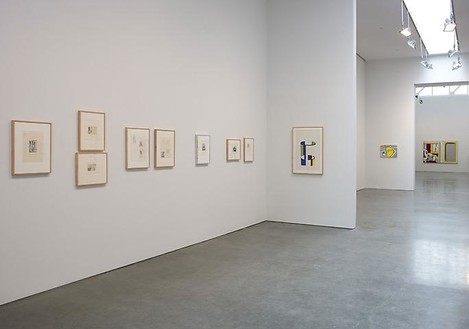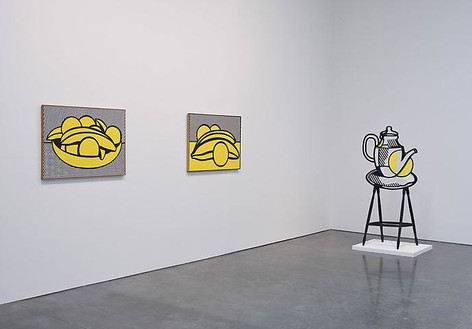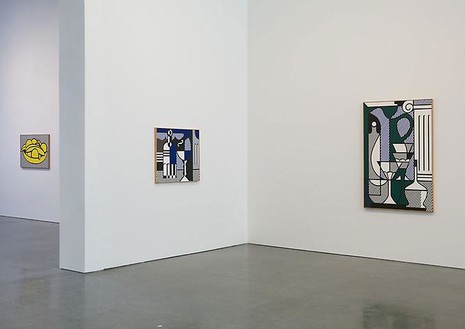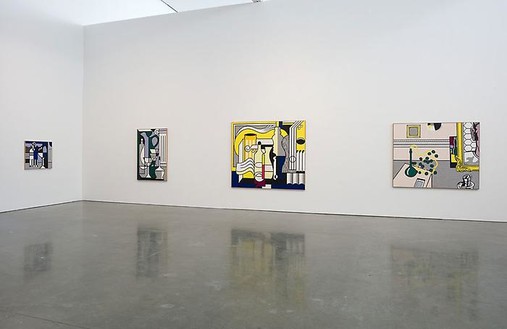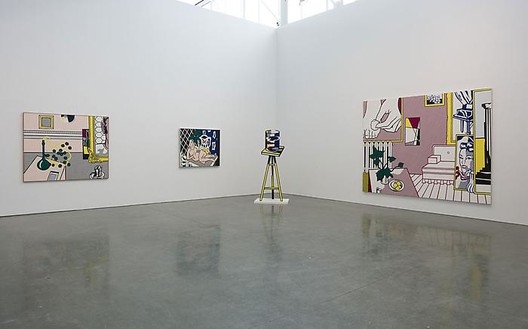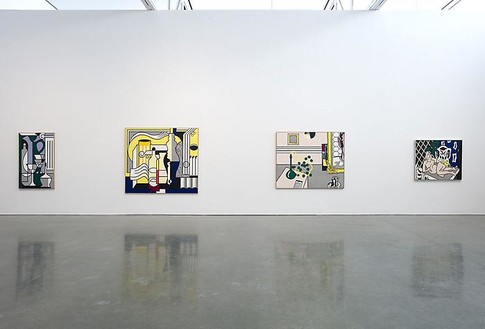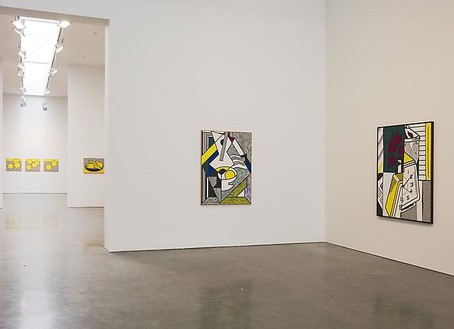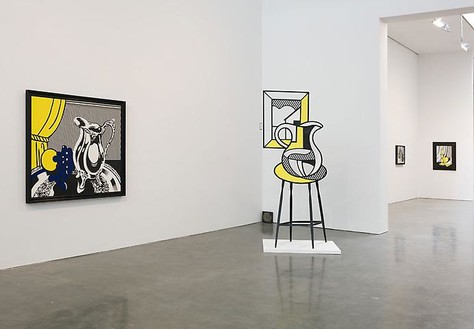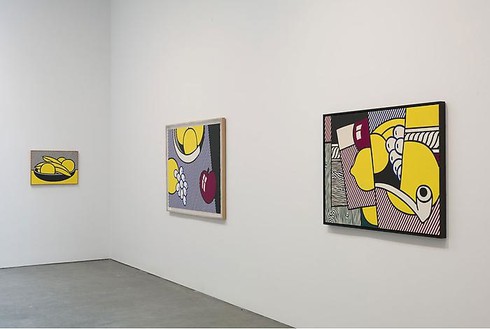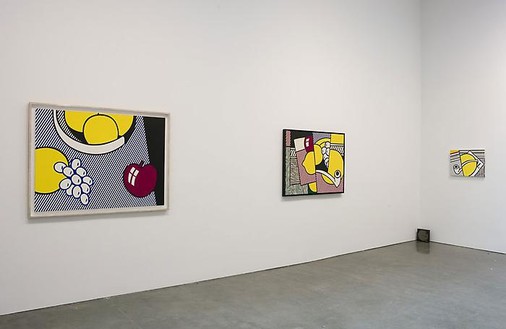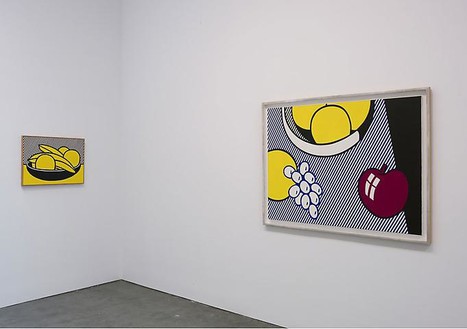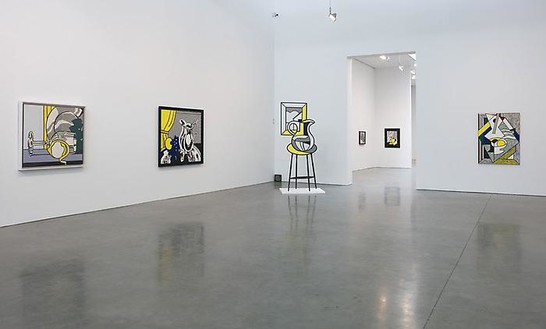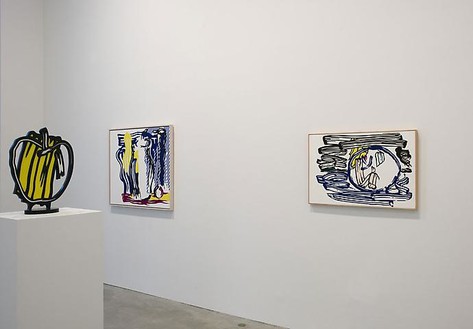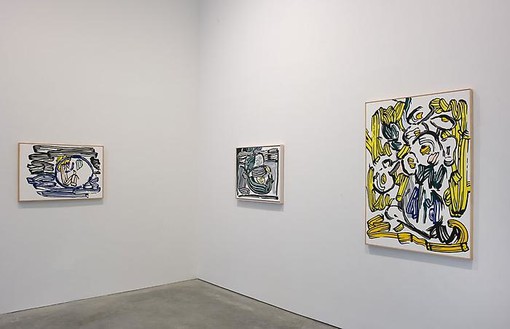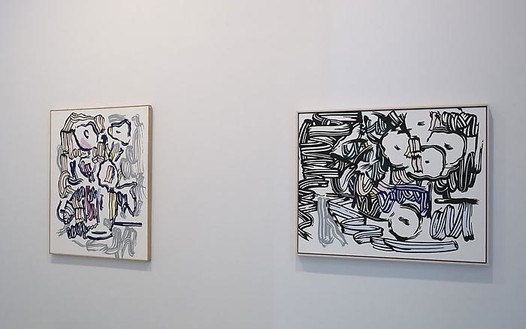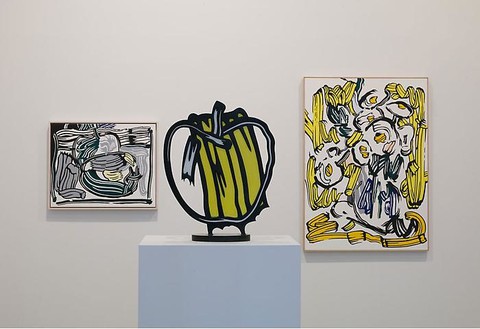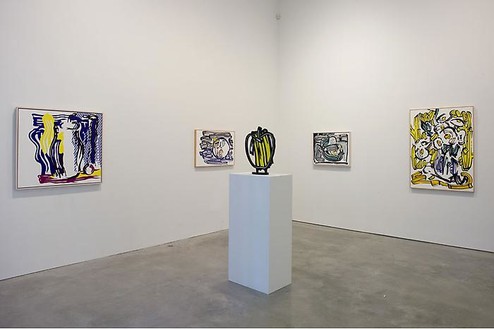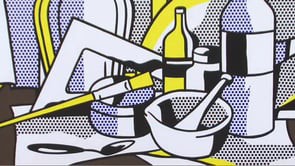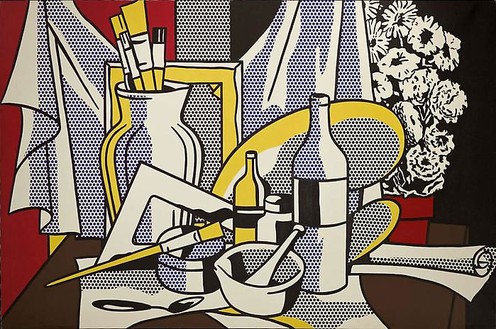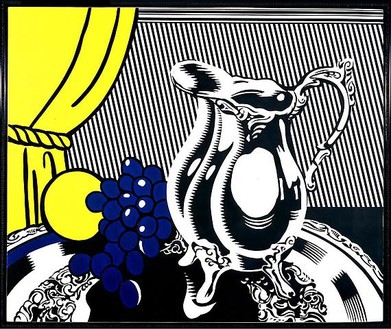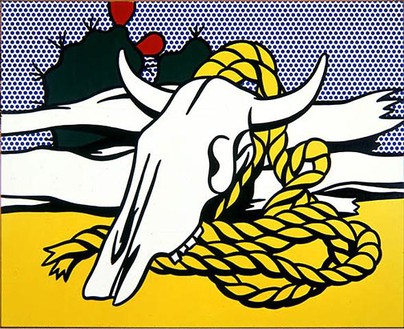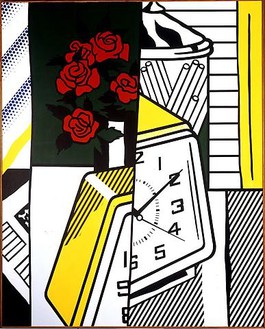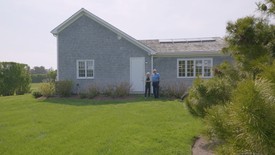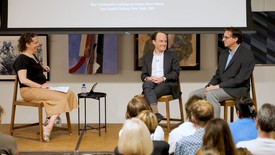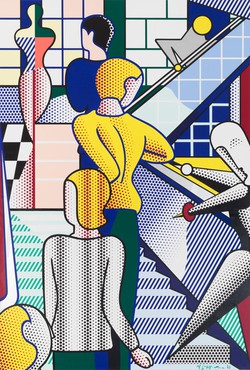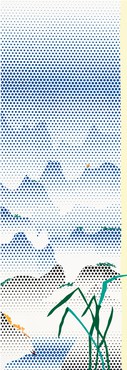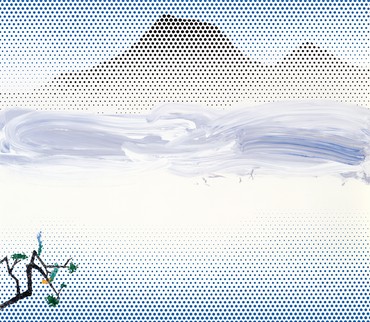About
When we think of still lifes, we think of paintings that have a certain atmosphere or ambience. My still life paintings have none of those qualities, they just have pictures of certain things that are in a still life, like lemons and grapefruits and so forth. It’s not meant to have the usual still life meaning.
—Roy Lichtenstein
Gagosian is pleased to present Roy Lichtenstein: Still Lifes, the first exhibition devoted solely to Lichtenstein’s still-life paintings, sculptures, and drawings, which span from 1972 through the early 1980s.
Although Lichtenstein will always be synonymous with Pop art, he continued to make inventive new work for almost three decades beyond the 1960s, during which he had become famous for his distinctive use of popular cartoon images and commercial painting styles. Beginning in 1972, he began to work on still lifes, making his own updated contribution to the venerated historical genre, using hard, vivid color and simulated Benday dots, laboriously painted by hand. Lichtenstein rendered his Still Lifes in flat, outlined shapes that were inspired by newspaper and print advertisements and painted to look like the originals. Frequently his evocations of mechanical reproduction were more pronounced than in the original source; even when adapting motifs from other artists’ works, Lichtenstein used postcards or reproductions of the original rather than the original itself.
Lichtenstein’s Still Lifes cover a variety of motifs and themes, including the most traditional such as fruit, flowers, and vases. He also created still lifes from contemporary vernacular subjects, including the intentionally banal Office Still Lifes, as well as from the contents of his own studio. During the 1970s he began to quote art-historical styles as well as his own previous works, for instance rendering his subject in a way that conflated Cubist or Expressionist style with his own signature technique. Using his “cartoonish” method of painting, he stripped both subjects and movements of their original import and gravitas. He also mined the modern masters of painting—from Matisse to Leger, Gris, and Raphael Peale, among others—for still life motifs, which he included in paintings or used alone in sculptures.
Share
Artist
Download
In Conversation
Irving Blum and Dorothy Lichtenstein
In celebration of the centenary of Roy Lichtenstein’s birth, Irving Blum and Dorothy Lichtenstein sat down to discuss the artist’s life and legacy, and the exhibition Lichtenstein Remembered curated by Blum at Gagosian, New York.
In Conversation
Daniel Belasco and Scott Rothkopf on Roy Lichtenstein
Gagosian and the Art Students League of New York hosted a conversation on Roy Lichtenstein with Daniel Belasco, executive director of the Al Held Foundation, and Scott Rothkopf, senior deputy director and chief curator of the Whitney Museum of American Art, New York. Organized in celebration of the centenary of the artist’s birth and moderated by Alison McDonald, chief creative officer at Gagosian, the discussion highlights multiple perspectives on Lichtenstein’s decades-long career, during which he helped originate the Pop art movement. The talk coincides with Lichtenstein Remembered, curated by Irving Blum and on view at Gagosian, New York, through October 21.
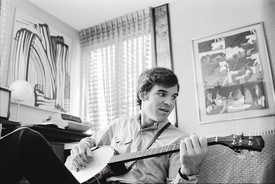
Roy and Irving
Actor and art collector Steve Martin reflects on the friendship and professional partnership between Roy Lichtenstein and art dealer Irving Blum.

Donald Marron
Jacoba Urist profiles the legendary collector.
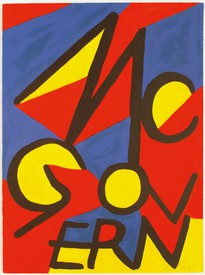
The Art History of Presidential Campaign Posters
Against the backdrop of the 2020 US presidential election, historian Hal Wert takes us through the artistic and political evolution of American campaign posters, from their origin in 1844 to the present. In an interview with Quarterly editor Gillian Jakab, Wert highlights an array of landmark posters and the artists who made them.
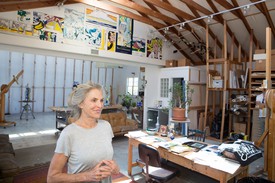
In Conversation
Dorothy Lichtenstein
Dorothy Lichtenstein sits down with Derek Blasberg to discuss the changes underway at the Lichtenstein Foundation, life in the 1960s, and what brought her to—and kept her in—the Hamptons.
